A master class in acting. A master class in filmmaking. Oren Moverman’s THE DINNER is a sumptuous feast for the psyche and the senses.

Based on Herman Koch’s 2009 bestseller of the same name, writer/director Oren Moverman has delivered an adaptation that surpasses the impact and appeal of the novel thanks to shifting the setting from Amsterdam to a well-healed area in the upper Northeastern United States (which allows for influences and plot points more familiar and telling to the American audience) and then strips away much of Koch’s sarcasm, replacing it with a deeper exploration and tacit commentary on morals and societal values through dynamic character studies. Those strong character studies are only elevated even higher thanks to superlative performances from Richard Gere, Rebecca Hall, Laura Linney, and Steve Coogan. What Moverman did last year with Richard Gere in “Time Out of Mind”, he now does with Coogan, leading to a tour de force performance, the best of Coogan’s already rich career.
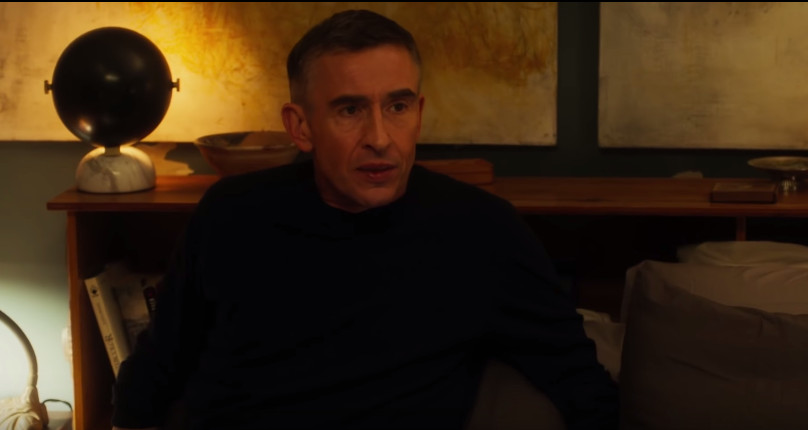
Retaining the structure of the novel, we are introduced to THE DINNER by Paul Lohman. A history professor, and obsessed with the Battle of Gettysburg, Lohman is anything but reliable as a narrator given his disdain and contempt for society and America as a whole, not to mention his recovering from a complete mental breakdown. By way of Paul’s introduction, we meet his older brother Stan. Distinguished, handsome, well-to-do, Stan is a successful congressman now campaigning for governor. Beyond his charismatic charm, key to his success with the public are his initiatives on mental health, yet despite Stan’s accomplishments, and his role in life of having raised Paul, Paul views him as nothing but an “ape.” Then there’s Stan’s second wife, Katelyn; a trophy wife who is more concerned with the trappings and glamour of a high-profile political lifestyle than she is with family or Stan’s desire to “do good” as a public servant. And then there’s Paul’s wife, Claire. Obsessive about their son and in her eggshell treatment of Paul, something doesn’t sit right as you watch and listen to her machinations and manipulations of her loved ones.
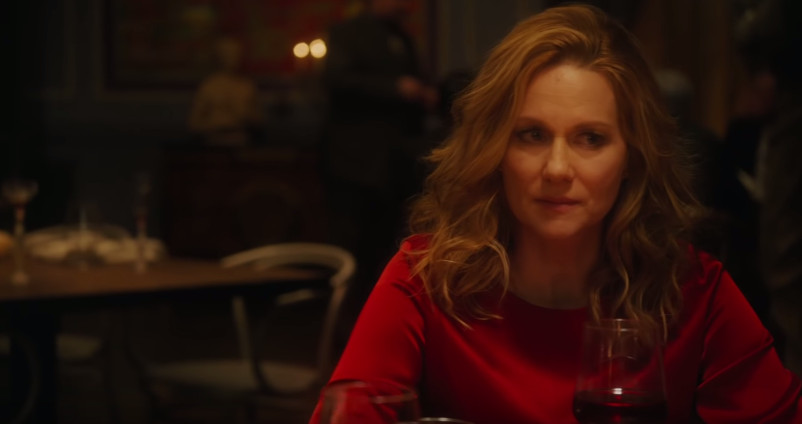
Beyond the adults, each couple has children. Katelyn is step-mother to Rick from Stan’s first marriage and mother to an adopted African-American boy, Beau, while Michael is son to Paul and Claire. While Stan’s family unit appears most cohesive, Paul’s is far from it. Although they live in the same house the relationship between Paul and Michael is beyond strained while Claire and Michael are so close as to raise eyebrows at the possibility of something incestuous between them which in turn adversely affects the marriage of Claire and the suspicious and mentally unstable Paul. There is no doubt the cousins get along much better than their parents.
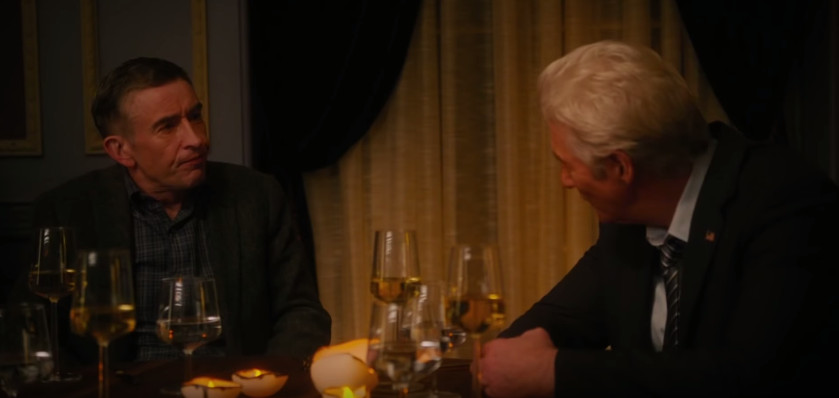
Invited to dinner by Stan to discuss “a family matter”, Paul is more than reluctant and put out at the idea of not only the invitation, but being forced to go. He detests what he views as pomposity on the part of Stan and believes this is just a political maneuver associated with Stan’s campaign. In an effort to get through the meal and hear Stan out, Claire tries to be a peacemaker, as does to a degree Katelyn, but Paul battles with snide and snarky remarks at every turn, commenting on the five-star food in this seven-course meal, the wait staff, the maitre d’, the restaurant itself, and above all, Stan.
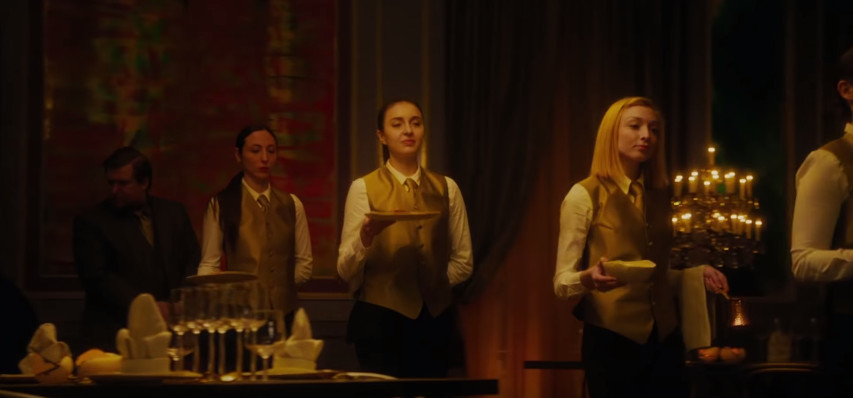
As we go through dinner, family history and dynamics unfold through flashbacks and less than polite dinner conversation. Although steeped in elegant and refined surroundings, the Lohman family are anything but and as the meal progresses, secrets about the boys are revealed, secrets to which Paul has never been made privy. Nothing is as it seems on the surface. The entire dinner event is the equivalent of putting a match to a can of lighter fluid, setting the stage for a battle of morality among these “adults” who (without divulging spoilers) have the fate of their teenaged sons, and themselves, in the palm of their collective hands.
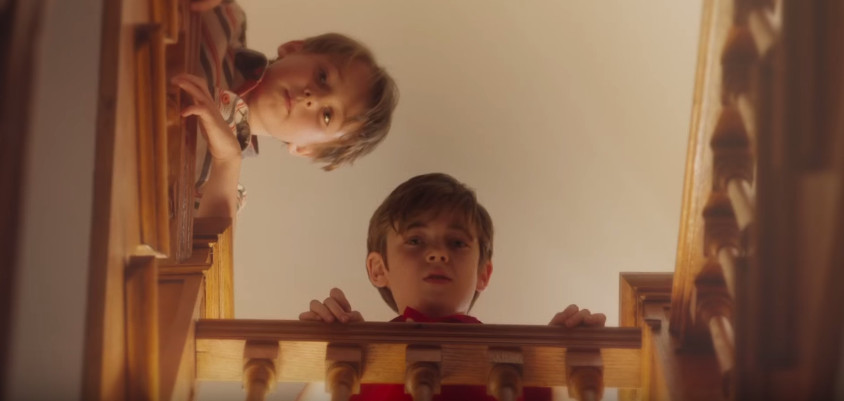
As mentioned above, the adaptation is exceedingly well done as Moverman shifts the story from Amsterdam to the United States. Capitalizing on the change of locale allowed Moverman to add a pivotal segment to the storytelling by making Paul a history professor and aficionado on the Battle of Gettysburg. A perfect analogy for a battle of brother against brother, Gettysburg becomes a key thematic that underscores the film both in story and in visuals. There is a montage of Gettysburg imagery pushing the envelope stylistically with a resonant cue-heavy score accompanying it that when melded with underscored dialogue delivered by Richard Gere’s Stan, plus with added splashes and infusions of blood red into the palette is not only exquisite, but powerful commentary on Paul and Stan.
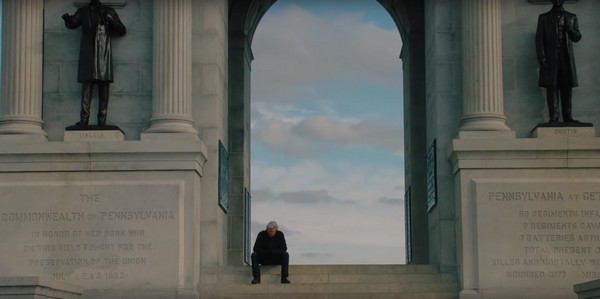
Because of Moverman’s belief in no rehearsal, the performances are visceral, raw and pure as the camera flows with the dialogue, the conversation.
As Paul teeters on the edge of outspoken sanity (played to perfection by Coogan), Laura Linney then steps in making Claire the master manipulator. As THE DINNER plays out, you see and feel not only her own delusions but how she pushes Paul, bending him to do her bidding when it comes to protecting “her” son. A big reveal between the couple sets the entire stage for the final ten minutes of the film which is electrifying. But it’s Coogan and Linney who mesmerize with their performances both individually and together. It’s the nuance of facial expression or physical movement, vocal inflection, and cadence, that make each of their performances masterful.

Disturbing – and meant to be so – is the desperation of Claire and Katelyn who want to cover-up the sins of the sons. While it goes to the idea of a mother lioness protecting her cub, it is telling as to the mindset and questioning of morals within each of these women. Interesting is to see Coogan’s Paul initially mortified by not only what his son has done, but what Claire has done in covering it up and keeping it from him, then only to have Claire play on his mental frailty and pull his strings to come around to her thinking and do her bidding. A fascinating psychological dance by a skilled puppet master which is enthralling to watch unfold.
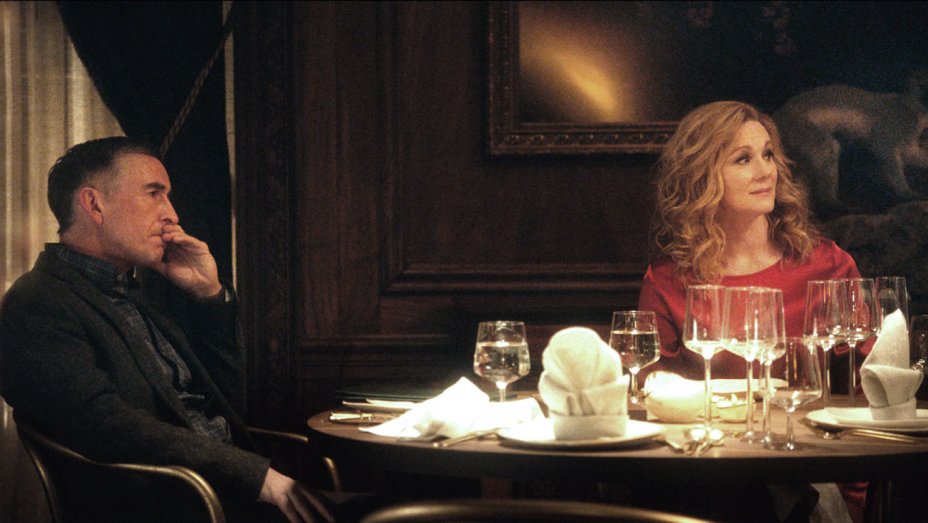
Richard Gere returns to a recognizable role as an affluent man, and although a politician, is one with morals, ethics, and integrity. Decisive. Caring. Stan proves the grounding sensibility in the film. And Gere is flawless.
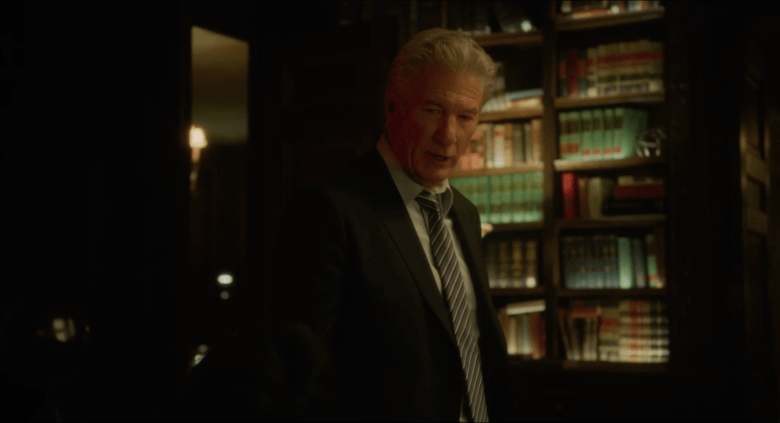
The calculated perfection of the dining experience itself is deliciously realized both in visuals and character development as it is juxtapositioned against the chaos of the dinner engagement itself.

Playing to the perfection and chaos is none other than the cinematographic maestro Bobby Bukowski. The team of Moverman and Bukowski is nothing short of magical as their visions and collaborative spirit enrich every film. With THE DINNER, the highly polished intense visual palette metaphorically elevates the story and the multiplicity of psychological gamesmanship and mental illness. Bukowski’s lighting and lensing is rich, textured and flavorful, blanketing scenes with shadow and dancing glimmers of light. THE DINNER is definitely the richest and boldest visual style to come from the team of Moverman and Bukowski.
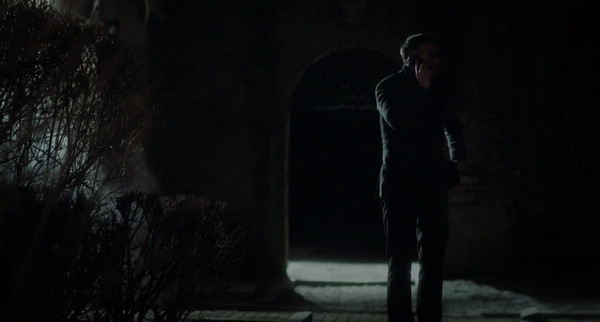
Creating three distinct visual styles, namely, the restaurant, the family stories and a crime scene, Bukowski ups his always excellent game. Cloaked in shadows of the past while residing in the present, the contrast of bright streaming light through expansive windows in flashbacks speaks volumes as to the then-openness of the brothers’ lives, particularly of Coogan’s Paul, before Paul’s breakdown and Claire’s recovery from near-death. Thanks to the visuals, we know that lives became closed off and shrouded after that. Interesting is the decision by Moverman and Bukowski to have Gere’s Stan as the one character who always has a brighter light shining on him or framing him, giving that tacit impression that he has always remained open and honest (despite being a politician). Tight mid-shots and two-shots shot from various angles drive the focus of the film while creating a sense of cloistered secrecy and intimacy befitting a family with dirt on its hands.

Color is king with THE DINNER, steeping the film in dark woods, the glowing crackling golden glow of fireplaces, and the use of red; burgundy reds, blood reds, orange-red fires. Each hue tells its own chapter in this story and serves as foreshadowing for each subsequent development. A beautiful and effective design.

Final scenes take place outside in the snow at Stan’s house. Not only do these scenes look beautiful and serene to provide yet another psychological twist through visual storytelling, but we see Stan and Paul fighting rough and tumble, rolling in the pristine new-fallen snow beneath the twinkling lights of the lawn ornament, as if a baptism with them starting anew, going back to the beginning with a fresh start. . .or is it? Is it just cleaning years of bad blood and, literally and figuratively? Moverman’s wisely leaves this open to individual interpretation.

Alex Hall’s editing is exemplary as he strikes a perfect balance of tension with unfolding time shifts and in the telling of family secrets, particularly the big secret involving the boys, Michael, Rick and Beau. Teasing us with tiny breadcrumbs that progressively get bigger with more intense lensing and quicker angle cuts as tension mounts to the big reveal, Moverman not only has us on the edge of our seats but pushes us to start searching and questioning our own minds and hearts and value systems. Throwing just one more log on this soon to be raging fire, are not only the fireplaces within the restaurant, but sound design, notably in one of Gere’s final monologues as Stan is burning down aspirations for cover-ups and secrecy by the others. Ever so subtly, but omnipresent, is the crackle of licks of fire analogous to some of the secrets that are unfolding. A striking touch.
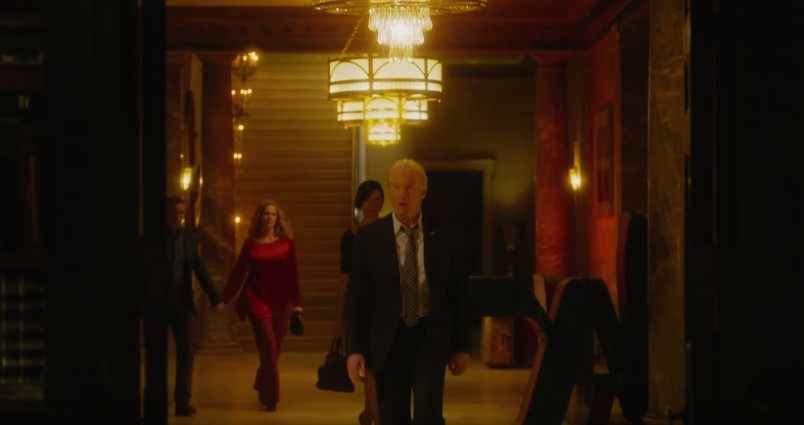
Reteaming with Kelly McGehee, production design is gorgeous. Lush and rich in color, fabrications and set decor within the restaurant. Design details to Paul and Claire’s house from the windows to homey furnishings in happier days have a lived-in look and feel. Present day we find the benefit of hallways and doorways metaphorically obfuscating the truth and the obstacles between Paul and Claire.
Thanks to 66 music cues, music is an eclectic mix. Particularly engaging is the transitional music signaling scene changes during the dinner courses. However, the diversity of the soundscape as a whole just adds to the furor and chaos of the family situation, adding to the audience feeling of being unsettling.

And as comes as no surprise, by the time THE DINNER is over, Moverman forces us to question our own sense of morality as we question that of this family.
Directed by Oren Moverman
Written by Oren Moverman based on the book by Herman Koch
Cast: Richard Gere, Steve Coogan, Laura Linney, Rebecca Hall











